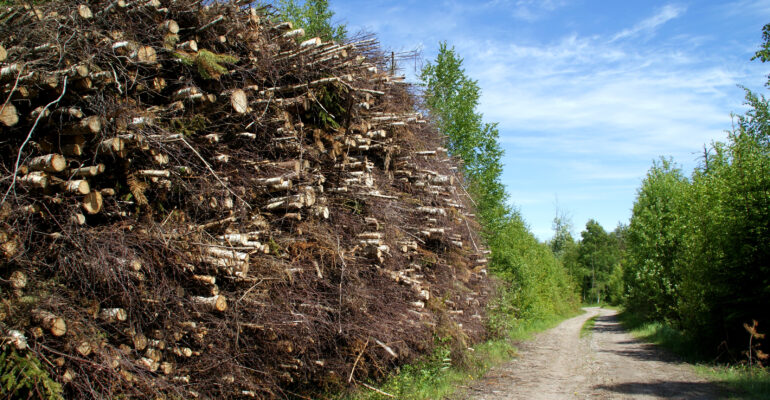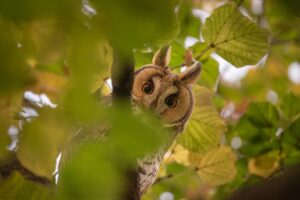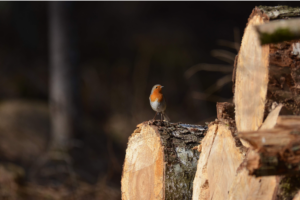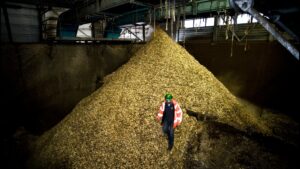Bioeconomy: the grass is not always greener on the “bio” side
Article by Erica Gentili, Junior Communications Officer for BirdLife Europe
While the term “bioeconomy” hints at a green and natural alternative to the fossil economy, built on biological resources and therefore sustainable, its application comes with a much more problematic reality. The ecosystems from which these resources come are already dramatically overused; an increasing demand for biomass would pose additional pressure on global ecosystems and the people who depend on them.
The threat to biodiversity
Our biodiversity is currently undergoing a big crisis due to the overexploitation of our ecosystems. Natural habitats are being converted to agriculture or silviculture1, with practices such as the replacement of large clear-cuts of natural forests with even-aged monocultures; these doings result in the disappearance of biodiversity in Europe. Moreover, this overuse creates a big issue in terms of carbon storage capacity: every hectare of land can absorb a certain amount of carbon through photosynthesis. Any use such as logging or cultivation reduces the carbon accumulation capacity significantly as opposed to a freely evolving land with natural vegetation.
Even if we were to assume that it is better to have bio-based products substituting fossil fuels, this would only be true if biomass was used for products and not as energy. Evidence shows that, once that carbon opportunity cost is taken into consideration, most bioenergy doesn’t save emissions, but is often a lot worse than the fossil fuel it replaces.
Shifting to the right focus
This is why, instead of lingering on a complete substitution of fossil fuels with biomass, the real focus should be on policies that aim at reducing the primary demand (for energy and materials) by applying, on one hand, the cascading principle of usage and on the other hand shifting to a truly circular economy (reducing waste, recycling, reusing, making products long-lasting, etc.). Due to the limited availability of biomass and the negative effects of intensive land use, it is important to prioritize long-lasting material applications over short-lived disposable products and only utilize biogenic resources for energy at the end of their life cycle.
As we have exceeded the limits of sustainable supply, a shift from fossil fuels to bio-sources without integration into a broader socio-ecological framework and a significant reduction of overall consumption would be catastrophic. The EU and its member states need to remove incentives for wood burning, introduce policies to reduce single-use packaging, and implement reusable systems. Only by significantly reducing extraction and resource consumption, across all sectors of the economy, can we meet the demand for biological resources without further harming biodiversity and the climate.
Alternatives and solutions
Research indicates that the disparity between the potential demand for biomass and its sustainable supply could reach up to 40-70% . This points to a simple fact: we can’t address the biomass gap if we don’t address its demand. And if we continue with the projection of a pure replacement of fossil fuel products and energy by biomass, then we won’t be able to do it sustainably.
Our land is already overused. Nature-friendly bioeconomy is not compatible with large-scale usage. But we have solutions that would benefit both our biodiversity and our economy: restoring forests and giving land back to nature. There is a huge scope for growth in the sector in terms of economic value, employment, and social benefits driven by nature restoration. Therefore, the emphasis of the bioeconomy should be on efficiency and recycling, rather than just substitution. We burn about half the wood we harvest: using it more efficiently can be a huge economic opportunity.
There is also room for the expansion or the creation of new markets. In Poland, the Polish Society for the Protection of Birds (OTOP) works closely with farmers to preserve aquatic warblers and peatlands, which are their natural habitats. The management of these peatlands involves cutting biomass (composed of reeds and bushes) with non-harmful techniques. Today, there’s no market to sell this biomass, although it is valuable material for house insulation or compost production. This is an example of a gap in the economy that could be taken advantage off by using biomass that has been harvested with non-harmful techniques. But it’s important to keep in mind though that volumes matter: sustainably produced biomass is limited, and we need to base the bioeconomy on what we have, not on what we want.
Looking forward and not back
Let’s not forget that bioeconomy was at the heart of our society’s economy two centuries ago. Back then, we replaced wood with coal, so why would we go back and replace coal with wood again? We know the consequences already: we will get back the same deforestation and degradation we “gained” before. We shouldn’t go back to pre-industrial times, we need to move into the future. That means energy that comes from wind and solar, smart products that require few materials, and materials that can be used efficiently and sparingly and recycled multiple times.
You can read our joint statement “NGOs raise concerns: Bioeconomy leads to further ecosystem exploitation” here: https://www.birdlife.org/wp-content/uploads/2024/03/Joint-NGO-Statement-Bioeconomy_2024-03-12.pdf
[1] Silviculture can be defined as the growing and tending of forest stands to meet management objectives (from: Encyclopedia of Forest Sciences, 2004)





